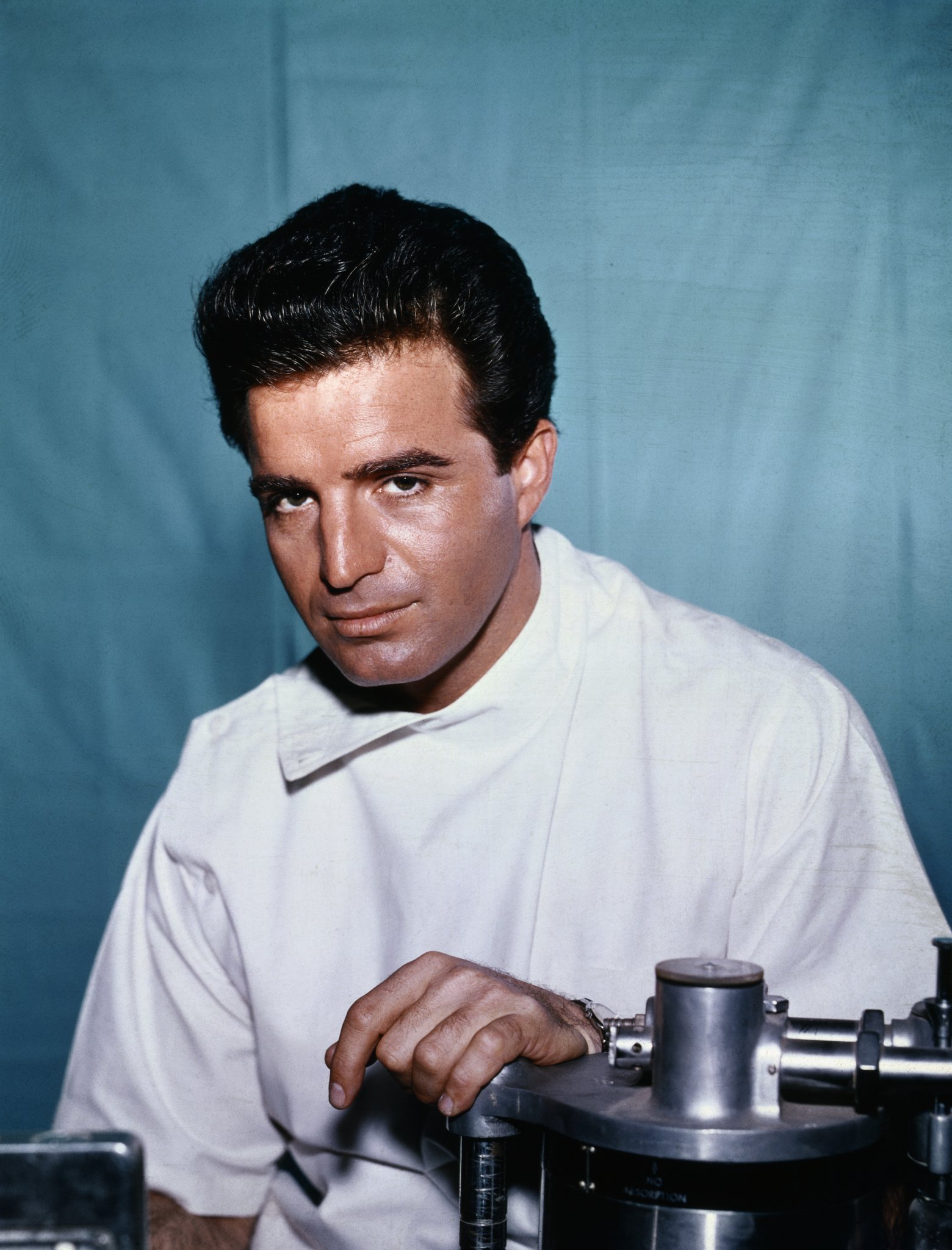State of the Shea EXTRA: Good Forefathers for “The Good Doctor” Part 1
Members of TGD cast celebrating its 100th episode in 2022
Gilmore Girls. Buffy the Vampire Slayer. The West Wing.
Going further back… The Mary Tyler Moore Show. Hill Street Blues. MacGyver.
Or way, WAY back: Mission Impossible. Adam-12. Cheyenne.
The older you are, the more of these scripted TV dramas you’re likely to recall, as they were all substantial successes in their day.
But what else do all these shows have in common? Every one of them came to an end after 7 seasons. Just as The Good Doctor is doing.
(If you’re a Gen-Xer like me saying “What the hell was Cheyenne?”-- it ran on ABC from 1955 through 1962 and was, according to Wiki, “the first hour-long Western, and the first hour-long dramatic series of any kind, with continuing characters, to last more than one season.”)
(And if you happen to enjoy nerdy TV history nuggets such as that one, you’re gonna like this bonus feature I’m bringing for the duration of my TGD blog posts.)
The Season 7 marker has long been noteworthy in television, mostly because it means
1) the show in question has accumulated enough episodes (over 100) to be marketable to syndicated markets…
2) the actors connected to the show are becoming more expensive to keep in the cast (especially if they’ve been there from the show’s pilot episode)... and
3) In some cases– but not all– the show has simply run its course, reflected in the departure of key cast and production staff.
As we all know, numerous prime-time shows have seen 8 seasons… or 12… or 15… and a select few, even longer than that. Based on things I’ve read and heard, The Good Doctor was looking to go at least 8 seasons– full seasons, not abbreviated ones– that would have added another 20-30 episodes to the 126 they ultimately got. But as we also know (all too well), the shows themselves rarely get to make that decision.
Nonetheless, as TGD scrubs out for the last time, it takes its place alongside the shows I mentioned above… and I think it does so proudly.
What about the medical TV dramas that preceded it? After all, both prime-time and daytime television have used the inherent drama of medicine since, well, before TV was even a mainstay (see radio-turned-TV drama Dr. Christian for more about that).
I decided to do an intermediate dive– “deep” dive doesn’t seem correct here– and shine a light on the most pioneering and/or enduring hour-long medical dramas American network TV has offered in its 70+ years. It’s quite an interesting evolution, one that will make you appreciate ShaunVision (not to mention the title character himself) all the more!
A couple quick notes before we start:
I chose to only include hour-long dramas in this retrospective– mostly because the storytelling structure is different in half-hour shows and/or comedies. So you won’t find M*A*S*H, Scrubs, and others in that genre here.
I’m only including medical dramas that ran on CBS, ABC, NBC, or FOX… mostly because that’s where not only the history is found, but also more consistent episodes-per-season needs.
MEDIC
Aired on: NBC
Seasons: 2 (1954-56)
Episodes: 59
“GUARDIAN OF BIRTH… HEALER OF THE SICK… COMFORTER OF THE AGING… TO THE PROFESSION OF MEDICINE; TO THE MEN AND WOMEN WHO LABOR IN ITS CAUSE, THIS STORY IS DEDICATED.”
So began Medic, the first TV medical drama to focus on medical procedures rather than personalities. In its two years on the air, Dr. Styner (played by Richard Boone, who ultimately was better known for starring in Westerns) dealt with patients needing corneal transplants, rare spinal surgeries, cancer, stomach re-sections, head injuries, and of course accident victims… just to name a few cases-of-the-week! And with it being seven decades ago, the options were much more limited than today (to say nothing of TV’s ability to show what was supposed to be happening)!
Some of the Medic episodes are available in their entirety on YouTube. This, the premiere episode, showcases a woman diagnosed with leukemia midway through her first pregnancy. There are a couple of conversations between husband and wife, including an extended one as he tries to break the news to her gently (HA! Like that’s possible), but the majority of the 30 minutes are devoted to either explaining leukemia itself, documenting the attempts at treatment… and when the woman lives long enough to carry the baby to term (?) but then dies on the table, a full SIX minutes are devoted to a real-time effort to clear the newborn's lungs and let her live. Which (spoiler alert) she does.
Medic was apparently up against the iconic I Love Lucy for at least some of its existence, which likely accounts for a relatively brief time in America’s living rooms. But while it may come across today as heavy-handed in tone, it was revolutionary stuff for the times. When variety shows, game shows, and comedy dominated the earliest, smallest screens, Medic laid the groundwork for countless medical dramas to come.
DR. KILDARE
Aired on: NBC
Seasons: 5 (1961-66)
Episodes: 191
Other medical shows came and went in the late 1950s, but it was Dr. Kildare and Ben Casey (discussed below) that successfully picked up where Medic left off five years earlier. Kildare– premiering just a few days ahead of Casey– had the benefit of a fictional doctor name already “known” to audiences by way of films and radio dramas in previous decades. With Richard Chamberlain portraying the young intern as he grew and learned and was promoted to resident, TV perhaps had its original medical heartthrob/ “Dr. Dreamy” as well. (Unless you preferred the rugged good looks of Vincent Edwards over on Ben Casey, that is.)
Like Medic, Dr. Kildare took on topics that were new to television at the time, including drug addiction, sickle cell anemia, and epilepsy. It even tried to tackle venereal disease (a.k.a Sexually Transmitted Diseases) at the request of President Lyndon Baines Johnson, but the episode was never produced due to objections from NBC.
This “opening credits” clip I’m featuring here is short, but conveys a lot about the emergency room drama Kildare helped introduce to TV. Sick child- check. Desperate mother- check. “Don’t know what’s wrong”– check. People rushing around (at least a few)- check. Gurneys– um, well… dang, didn’t this pretend hospital have any GURNEYS??
You’ll see what I mean.
What Dr. Kildare DID acquire over its five years (when 32-34 episodes a season was the norm) were plenty of future hallmarks for medical dramas, including
An older, wiser superior/advisor/mentor to the title character
A more serialized approach to storytelling with story arcs preferred to self-contained episodes (this was more prevalent in later seasons)
An impressive list of guest stars (including the legendary Fred Astaire, much to my surprise)
Dr. Kildare was a top 20 ratings hit for NBC in its first three seasons, and a marketing sensation throughout (largely thanks to Chamberlain’s new “teen idol” status).
MEANWHILE…
BEN CASEY
Aired on: ABC
Seasons: 5 (1961-66)
Episodes: 153 (NOTE: Kildare had more eps because it went to twin half-hour episodes per week in its final season.)
While both had a mentor-type in their midst, and both shows turned to multi-episode story arcs in due time… there were definite differences between Dr. Casey and Dr. Kildare, the most notable perhaps being his age and experience (Casey begins the series as Chief Resident, embarking on a career in neurosurgery).
And there were distinct opening titles leading off every episode of Ben Casey; it’s the “man-woman-birth-death-infinity” chalkboard sequence you’ll see in the clip.
But once that finished, viewers were thrust quickly into the world of urgent movement (hey, THERE’s a gurney!), pulsing music in 5/4 time, and innovative POV shots.
And if this overhead gallery shot reminds you of any number of TGD episodes– or other medical dramas, for that matter– thank Ben Casey for introducing it.
It also relied not only on real-life medical doctors for script accuracy, but technical advisors who showed the actors how to handle the medical equipment they used on the show properly.
Ratings-wise, Ben Casey bore a similar story to Dr. Kildare, including top 20 finishes in its first two seasons. Merchandising tie-in opportunities were similar too. But one thing this show can claim that Kildare cannot? Its influence on prime-time cartoon TV… from The Flinstones (which aired in the ‘60s as well) to The Simpsons (which only SEEMS it’s been on TV since the 60s). Ben Casey’s been there in one form or another!
Coming in the next EXTRA edition: Star TV docs of the 70s!
Like what you’re reading here? Please post a comment and let me know!









